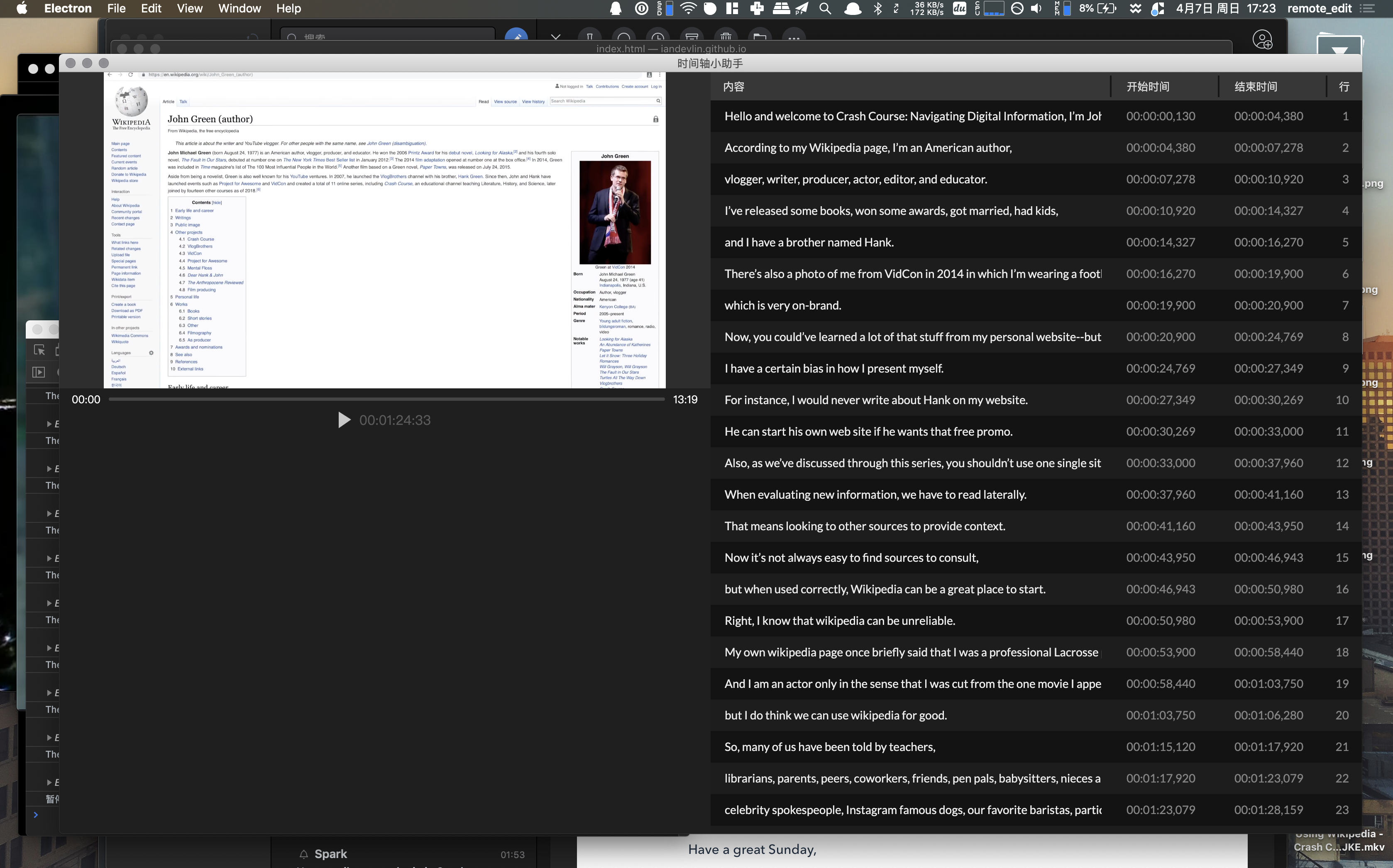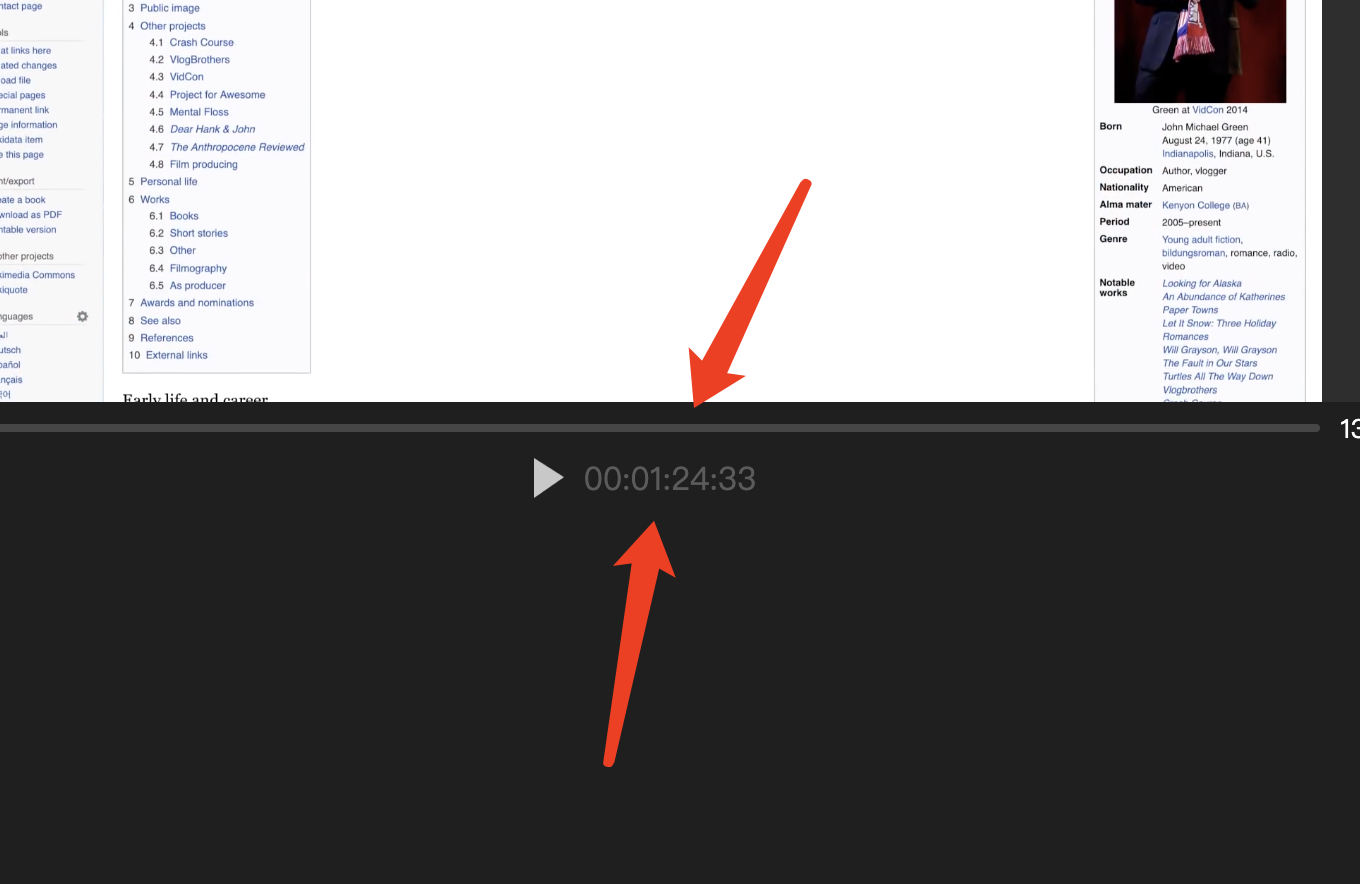@tidoust
Wouldn't it be more interesting to get the "frame that will be rendered on next repaint" instead, to avoid reacting up to 16ms late to a change of frame?
Good point. The key thing is indeed to be able to act essentially in sync with the frame changes, so that you can match external actions to frame changes in the video.



 which is very bad..
which is very bad..
I've heard a couple of companies point out that one of the problems that makes it hard (at least harder than it could be) to do post-production of videos in Web browsers is that there is no easy way to process media elements on a frame by frame basis, whereas that is the usual default in Non-Linear Editors (NLE).
The
currentTimeproperty takes a time, not a frame number or an SMPTE timecode. Conversion from/to times to/from frame numbers is doable but supposes one knows the framerate of the video, which is not exposed to Web applications (a generic NLE would thus not know about it). Plus that framerate may actually vary over time.Also, internal rounding of time values may mean that one seeks to the end of the previous frame instead of the beginning of a specific video frame.
Digging around, I've found a number of discussions and issues around the topic, most notably:
There have probably been other discussions around the topic.
I'm raising this issue to collect practical use cases and requirements for the feature, and gauge interest from media companies to see a solution emerge. It would be good to precisely identify what does not work today, what minimal updates to media elements could solve the issue, and what these updates would imply from an implementation perspective.